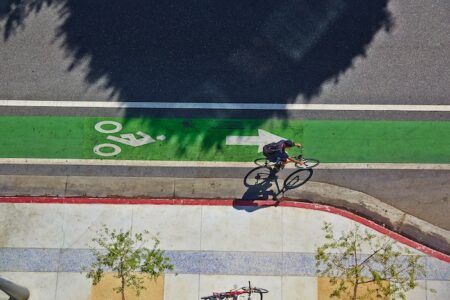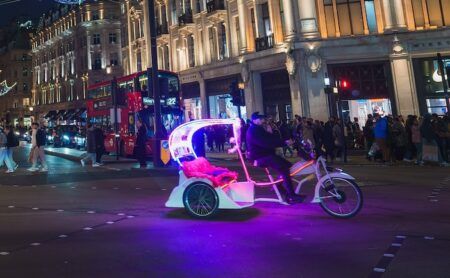Ford Motor Company is expanding its global Smart Mobility plan with a new experiment to study how electric bicycles can work seamlessly with cars and public transport to deliver faster and easier daily commutes and help businesses operating in urban centers. Known as, ‘Handle on Mobility’, the project has been unveiled at the Mobile World Congress in Barcelona, Spain, and marks the latest mobility scheme that company has announced this year as part of its plan to help change the way the world moves through innovation in connectivity, mobility, autonomous vehicles, customer experience and big data.
The Handle on Mobility experiment extends the range of transport solutions for a connected journey that is more efficient, safer, healthier, and enables journeys to be completed with less anxiety and stress. As a starting point for the experiment, Ford challenged its employees around the world to submit designs for e-bikes. The prototype MoDe:Me and MoDe:Pro e-bikes are among the top designs from more than 100 submitted. Both electric bikes are equipped with a 200W motor, with 9-amp-hour battery that provides electric pedal assistance for speeds of up to 15mph (25km/h). The prototype e-bikes offer technology inspired by the automotive industry, including a rear-facing ultrasonic sensor, which enables a rider alert system that both warns the cyclist when a vehicle is overtaking, by vibrating both handlebars, and alerts motorists of the presence of the e-bike by illuminating handlebar lights.
The bikes, which fold easily into most vehicles, meet the needs of different users. The MoDe:Me e-bike, built with the help of bicycle manufacturer Dahon, is intended for urban commuters to keep moving in congested city traffic. It folds and stows easily, allowing commuters to park on the city outskirts, take the e-bike onto public transport and travel to the center, then ride the e-bike to their destination. The MoDe:Pro e-bike, built by a Ford team, is intended for urban commercial use, such as by couriers, electricians, and goods and delivery services. It is designed to stow safely into commercial vehicles, which can act as carrier and support vehicle, and can be combined with more than one e-bike. The prototype bikes work with a prototype smartphone application, called MoDe:Link. Real-time information from the app enables the e-bikes to deliver: navigation through handle-bar grip vibrations to let the rider know when to turn; identification of bike-friendly roads, hazards and alerts, and will be able to sense, and communicate with other vehicles; multimodal navigation and smart routing that integrates with personal vehicle and public transportation networks; and the electric pedal assist rate can be adjusted based on heart rate.
“There are so many ways to get around a city, but what is really needed is a way to connect all of these transport options together,” explained Ken Washington, vice president of Ford research and advanced engineering. “Being able to seamlessly move between cars, buses, trains and e-bikes and react to changing traffic situations can make a big difference, both for commuters, and for those delivering goods, services and healthcare.”
For a video illustrating the system, click here




